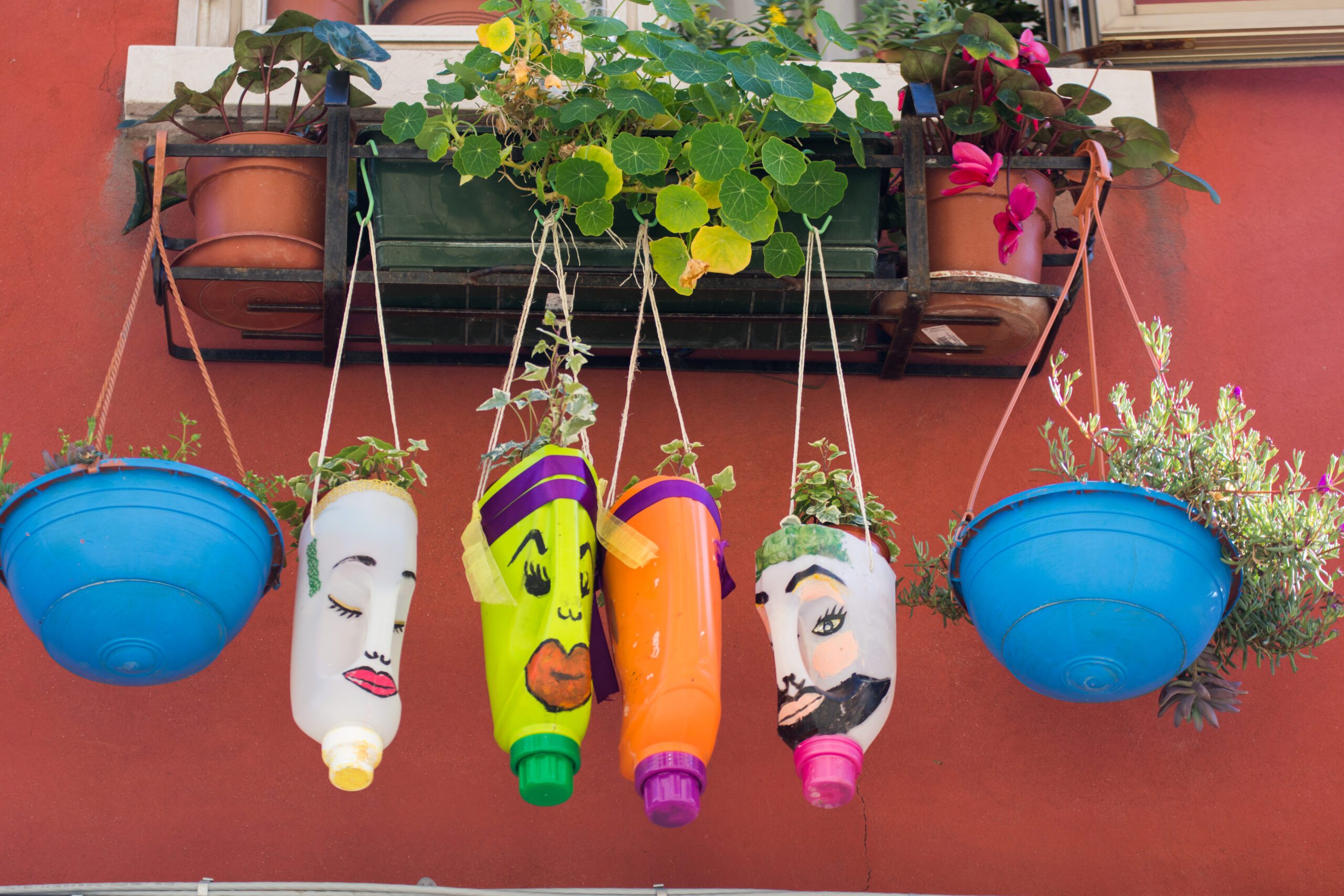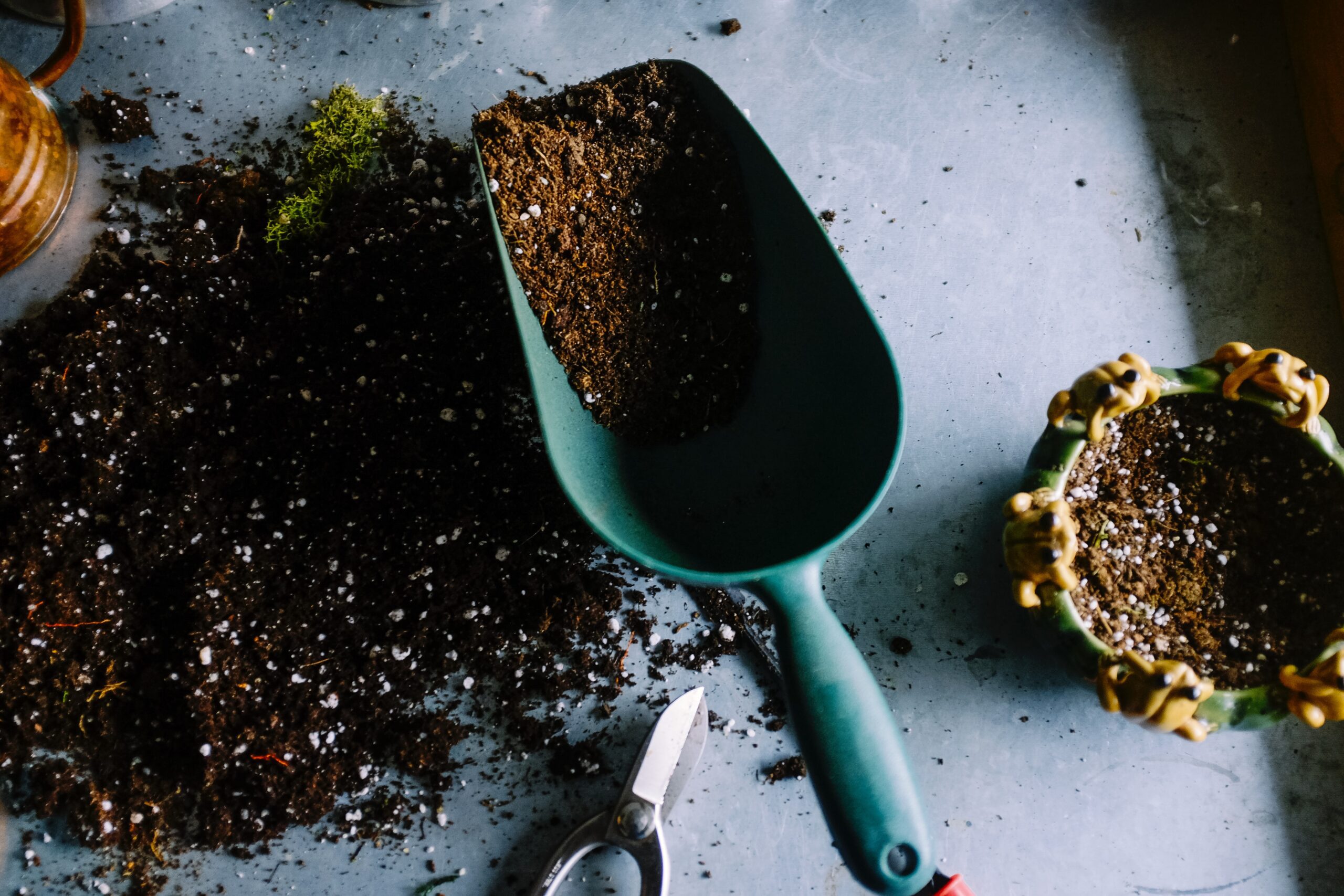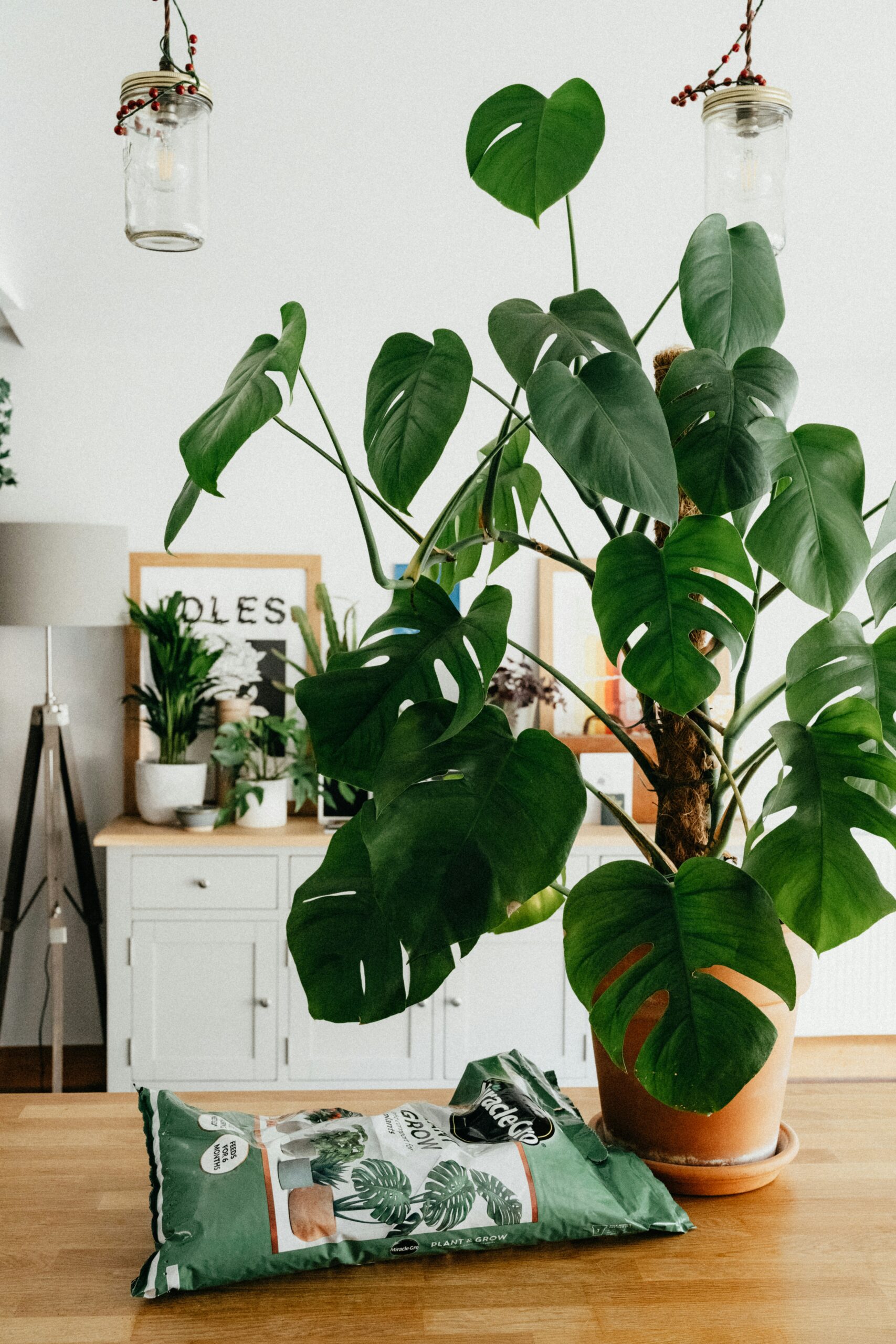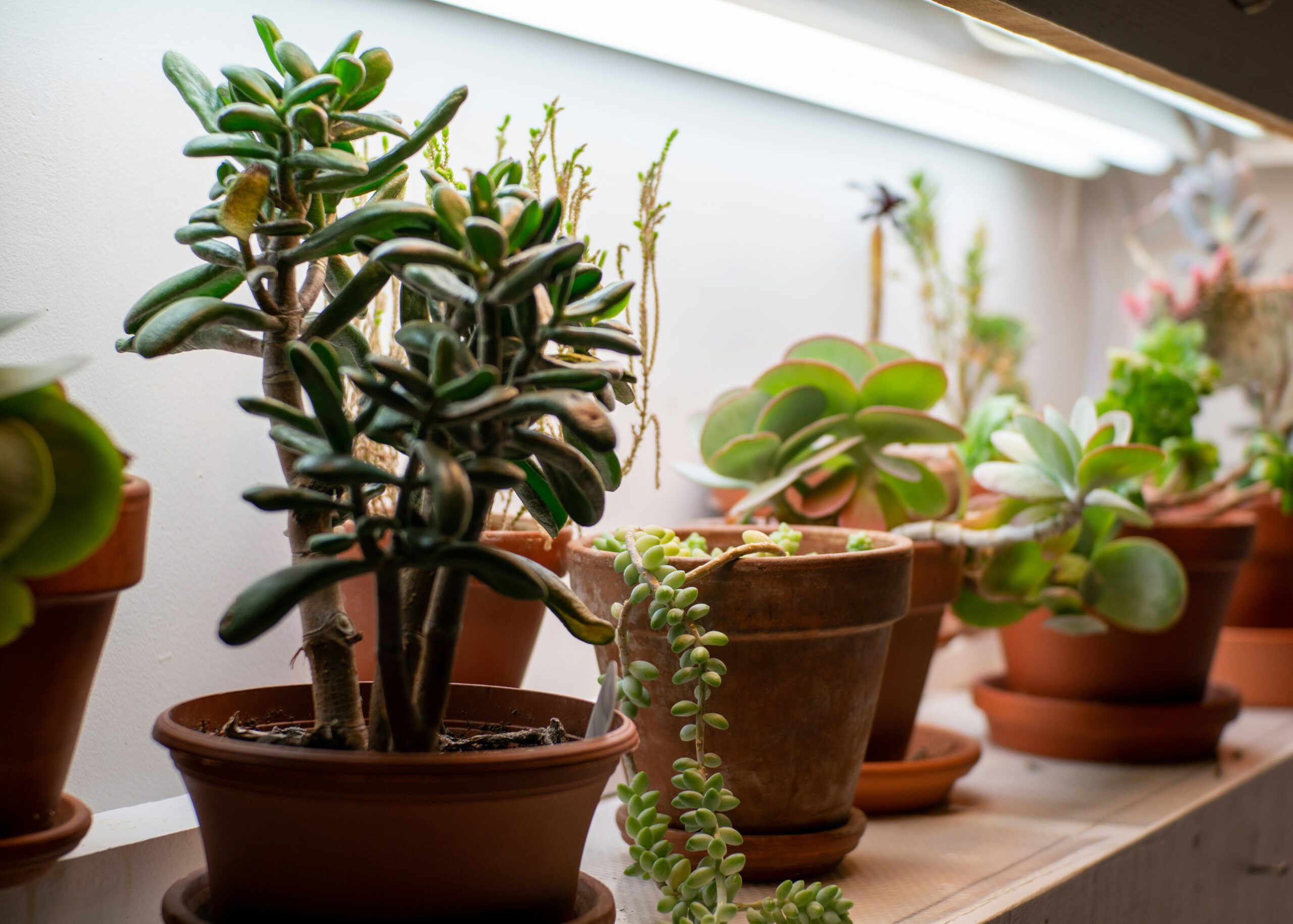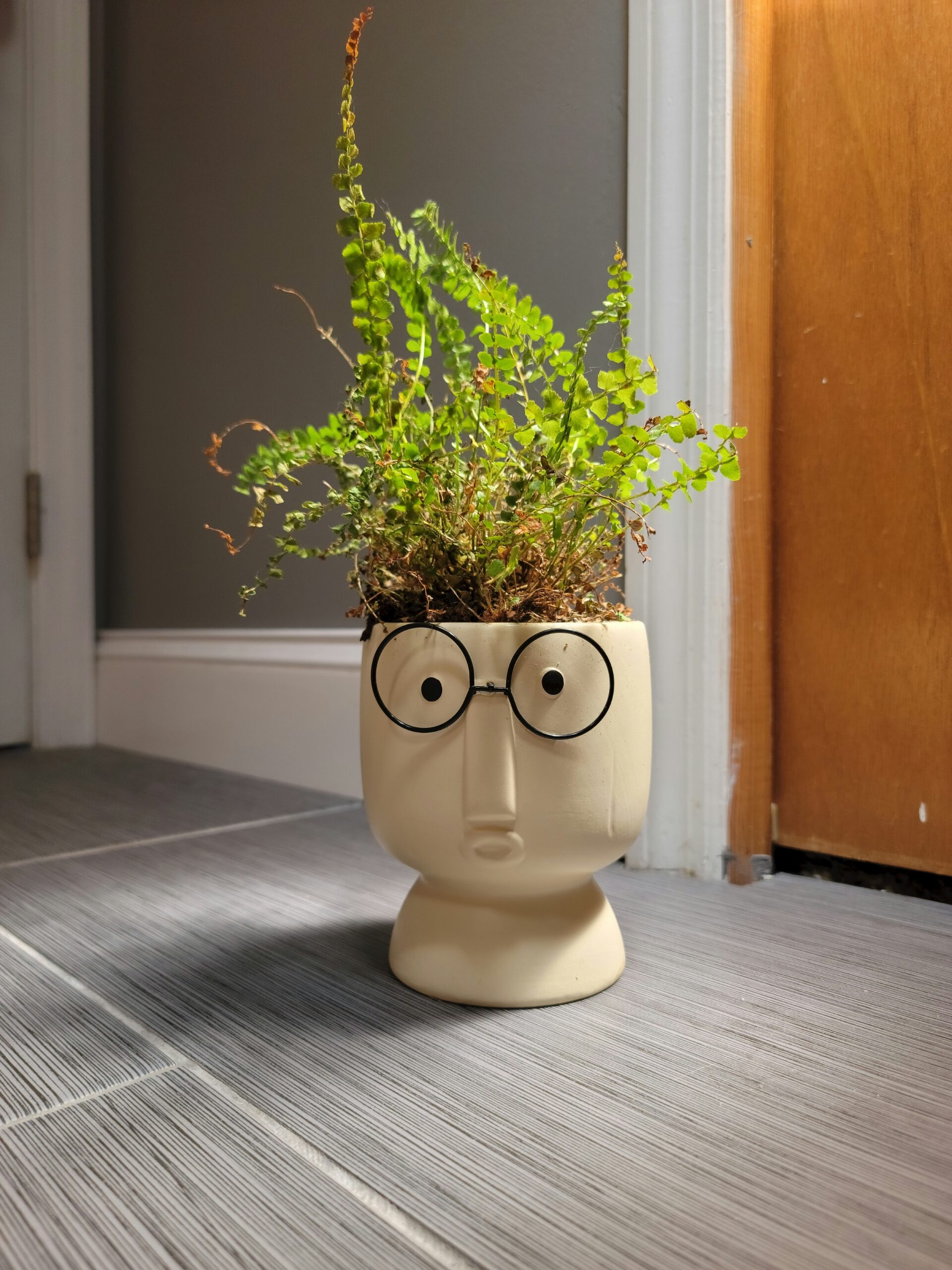This post shows you container gardening hacks that will easily save you money!
This site contains affiliate links. I may earn a small commission, at no extra cost to you.
Want to learn how to grow vegetables while saving money at the same time?
Contrary to popular belief, it is possible to garden without spending a ton of money upfront.
There are plenty of container gardening hacks that you can try if you just dig deep and use a little creativity!
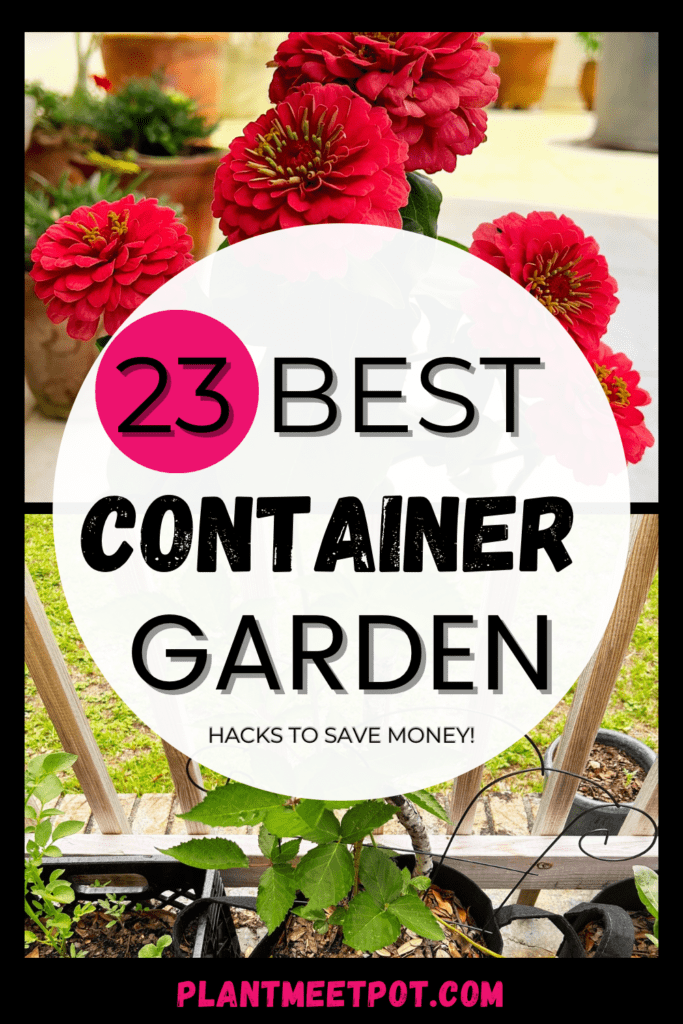
No matter if you are starting a garden on a tiny apartment balcony or have a small plot in your backyard, anyone can grow homegrown food.
Saving money is just a bonus!
Money-saving Tips for Container Gardening
If you’re starting a container garden, there are a few things you should pay attention to that’ll help save the most money:
Find items at home. You would be surprised what items you can use for gardening that are already in your home. It’s a great way to get a head start on Spring cleaning and repurposing items.
Learn to Do It Yourself (DIY). Did you know soil is one of the biggest expenses of container gardening? Buying high-quality soil is great but learning to DIY will save you so much money in the long run!
Think outside the box! Overconsumption is normalized but there are many products you can get for free if you just venture into your community. It’s mentally stimulating to brainstorm creative ways to garden.
Show kindness. As someone who used to work in customer service, asking for free items with kindness will get you more than you ever could’ve imagined!
Go local. Public resources that you pay for should be your first stop for seeds, pots, or plants. Hello local libraries and government programs!
23 Container Gardening Hacks to Help You Save Money
1. DIY your potting soil
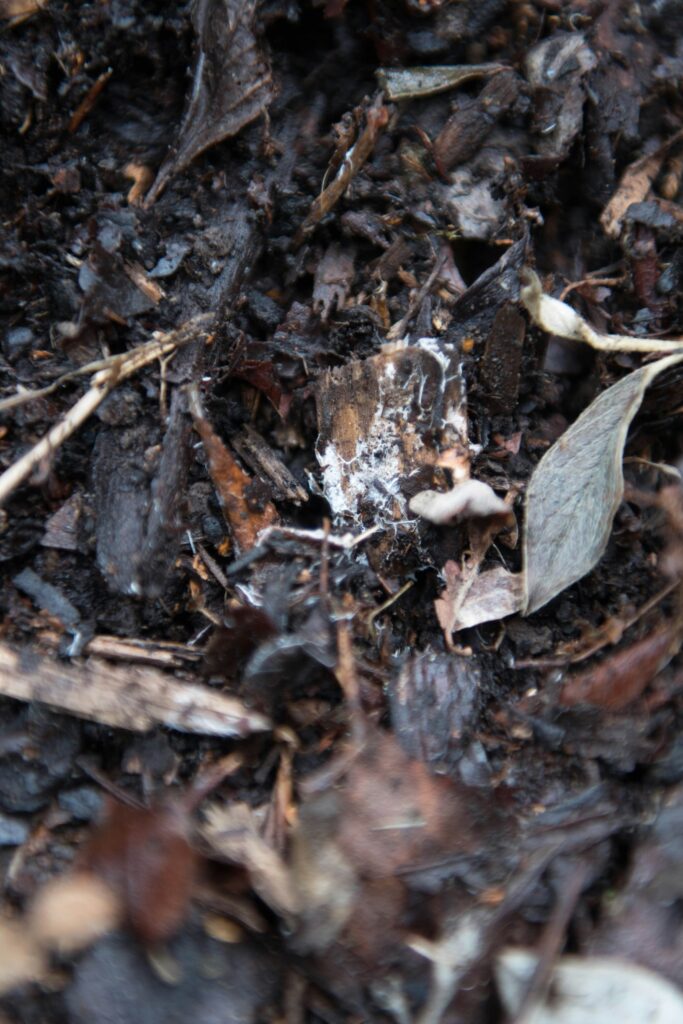

Potting mix is one of the most expensive gardening items.
Try making yours from scratch as one of the best container gardening hacks you could do.
Make an organic mix from homemade compost or pick up compost for free from a local recycling center.
Add bark or wood chips for water retention and vermiculite for aeration. This article contains a simple recipe to get started!
2. Reuse potting soil
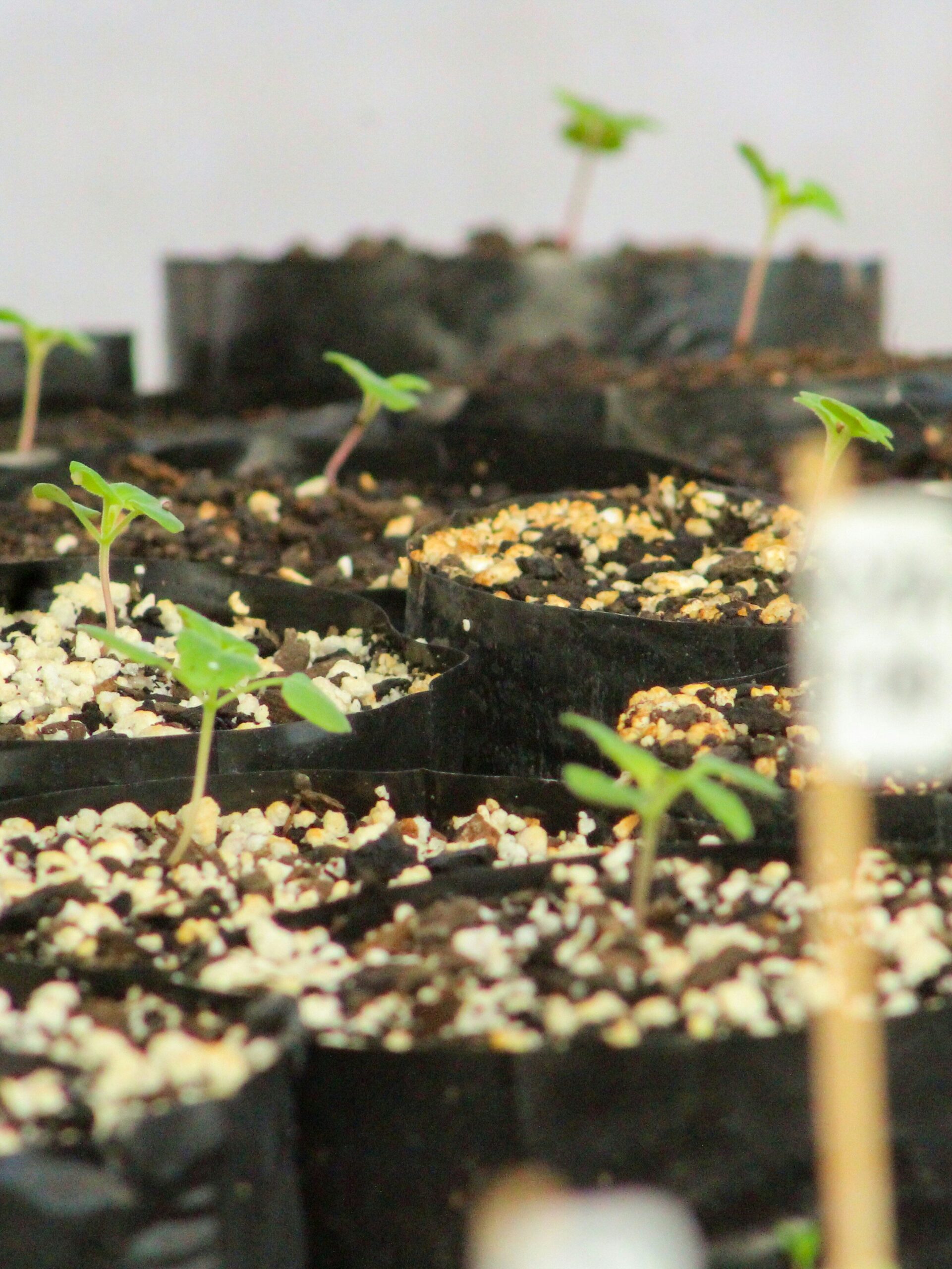

Instead of buying new potting soil, just replenish it for the next growing season!
With container gardening, most nutrients have leeched out from the soil and you’ll have to replenish it with compost.
The only exception to this is if your plant died due to disease; then you’ll want to start with a fresh bag!
3. Grow in large planters


Instead of buying individual smaller pots for each plant, stick to larger planters with multiple plants.
Larger volumes of soil hold moisture for longer which means less watering for you and companion planting helps keep pests at bay.
Larger pots also allow for wider spreading of the root systems, encouraging better overall growth and a higher yield of fruit!
4. Invest in a 5-gallon bucket
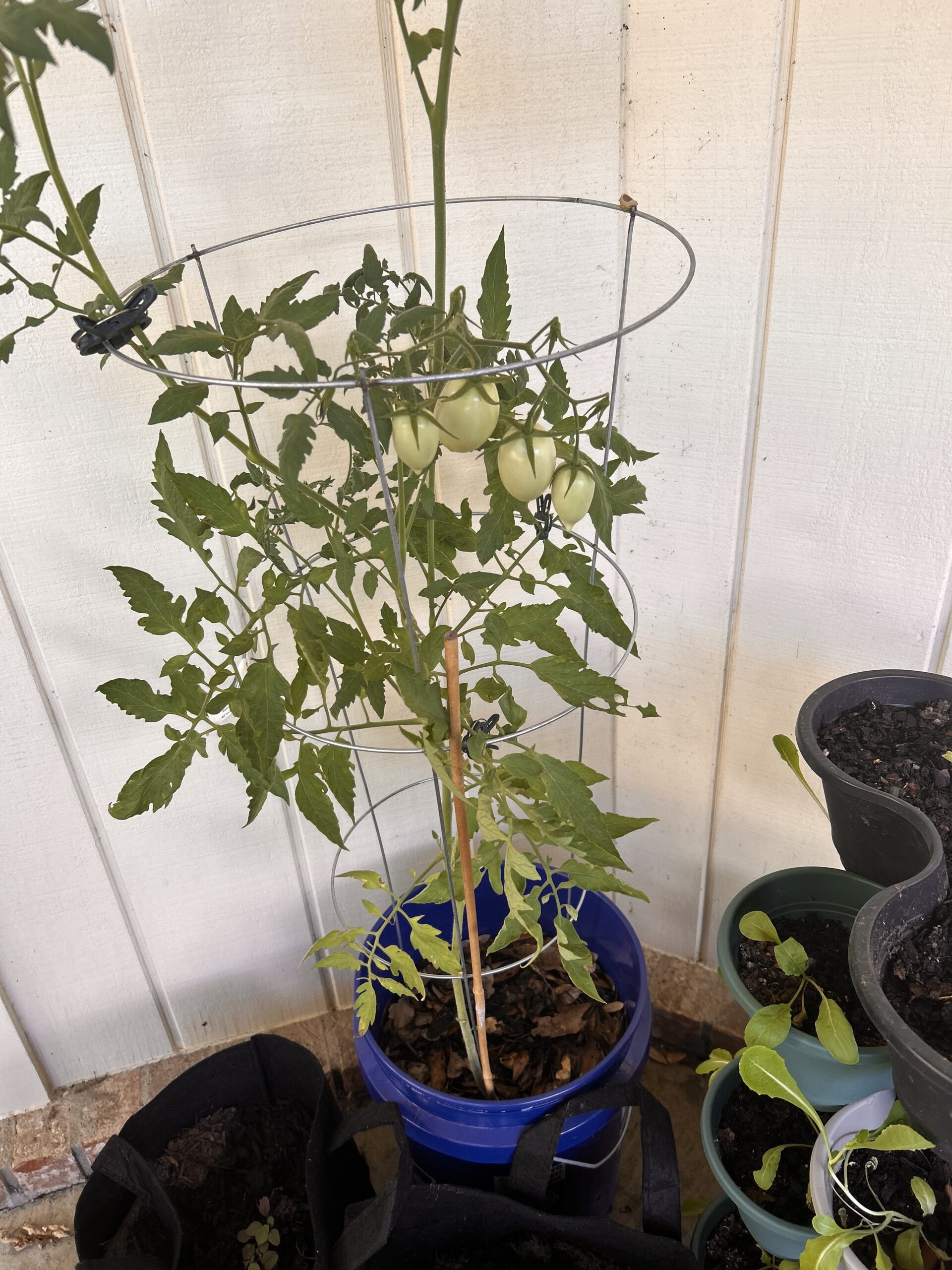

The classic 5-gallon bucket comes in handy for container gardens because it’s multipurpose!
Use it as a chair, step stool, a place to throw out weeds, or catch rainwater!
My favorite way to use them, as you can see here, is to turn them into planters and grow tomatoes!
5. Repurpose from thrift stores
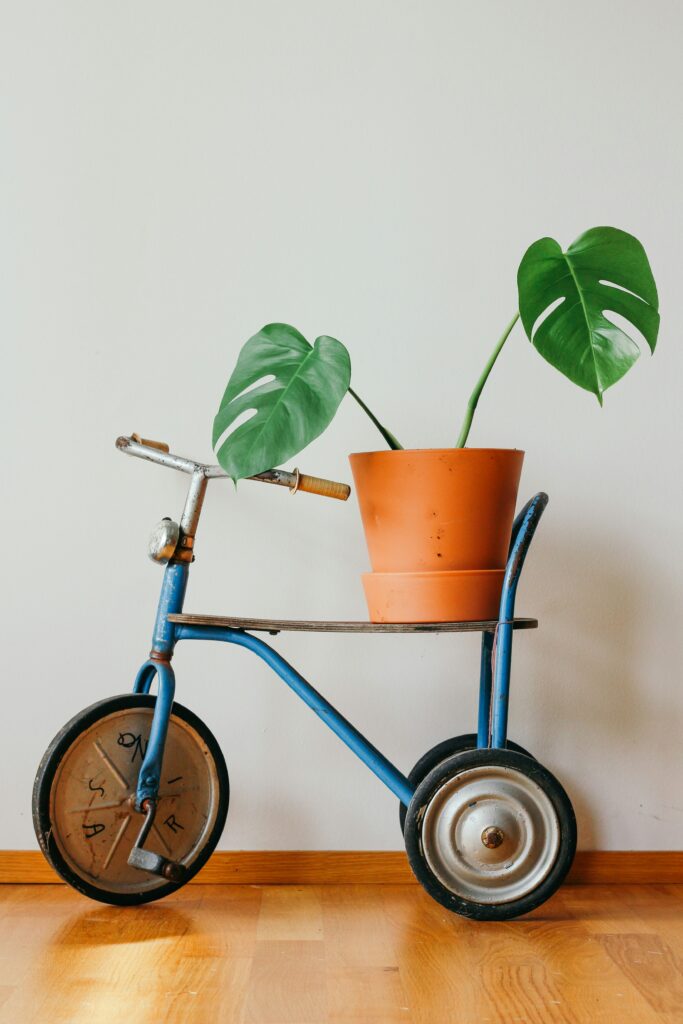

Thrift stores are my favorite place to repurpose second-hand items for low prices!
Not only will you find unique pots and containers to personalize your garden, but you’ll start using furniture in new ways.
Ladders can be used as plant shelves to save space. Storage totes can be used as raised beds for companion planting. Old dishware makes for unique planters.
The ideas are endless!
6. Collect used coffee grounds
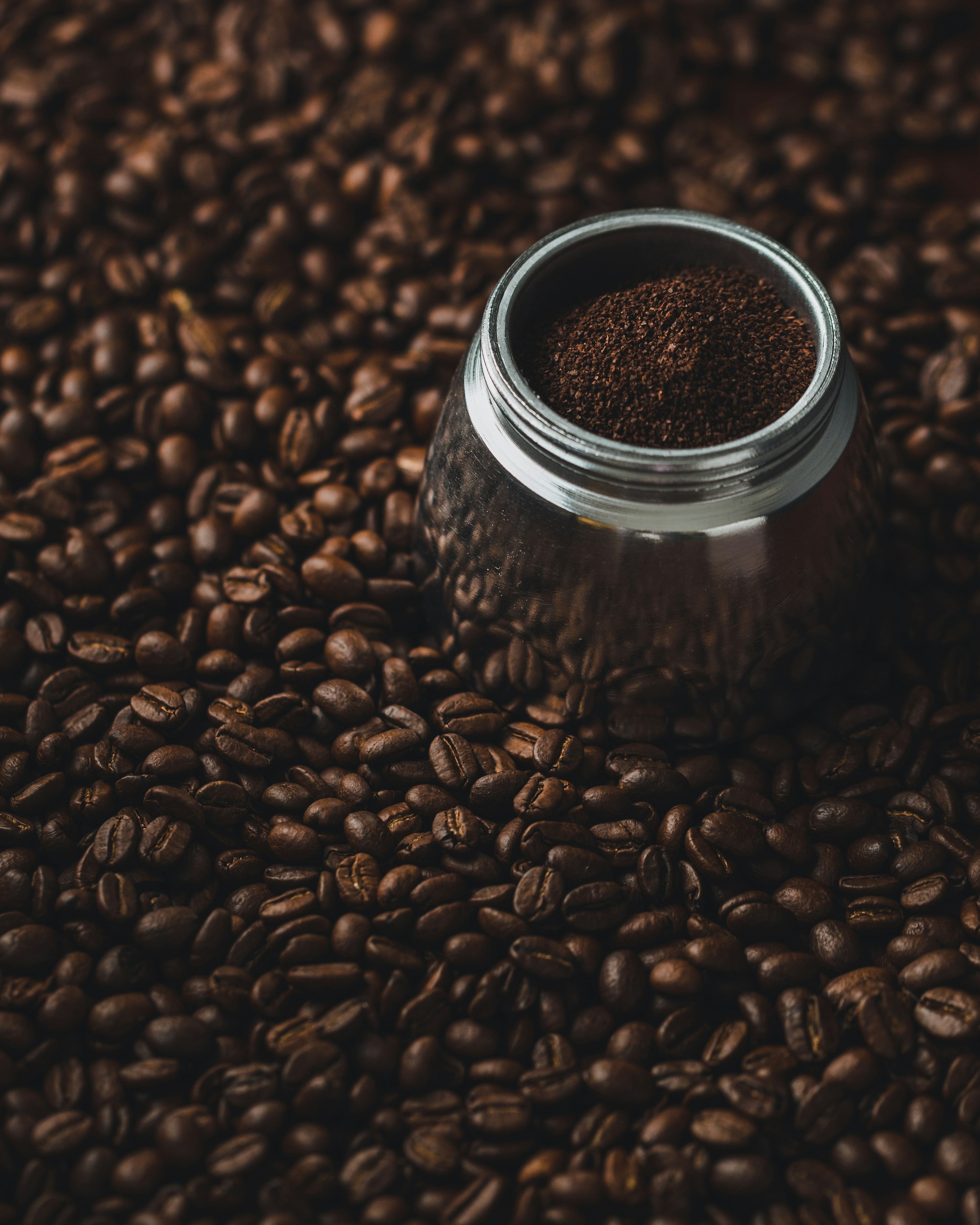

Used coffee grounds are high in nitrogen and a huge boost to acid-loving plants like blueberries.
Call your local coffee shop or check out a Starbuck’s near you where they provide a recycling grounds program.
For best use, mix with compost and sprinkle as a top layer to your plants when they need a boost of natural fertilizer.
7. Compost for fertilizer
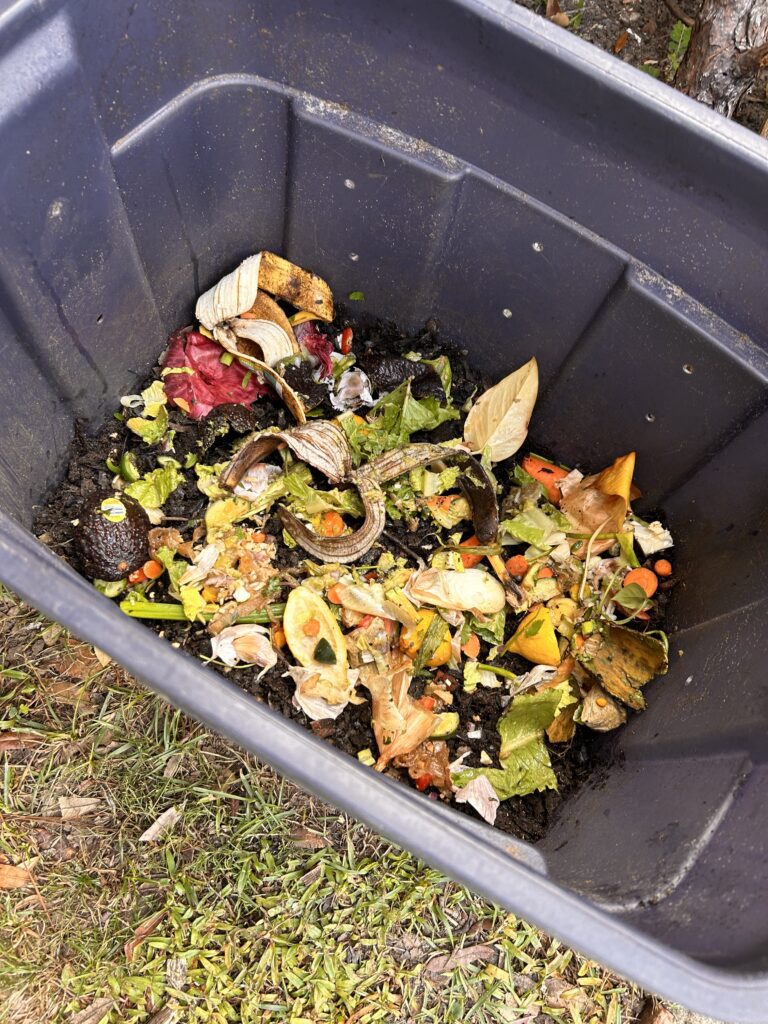

How many times have you thrown out expired fruits and vegetables from your fridge?
Turn expired foods into a useful product for your garden through composting and use the remains as a natural and free fertilizer!
There are several ways to compost when living in an apartment or house so do some research and find out which option is best for you!
8. Grow the expensive stuff
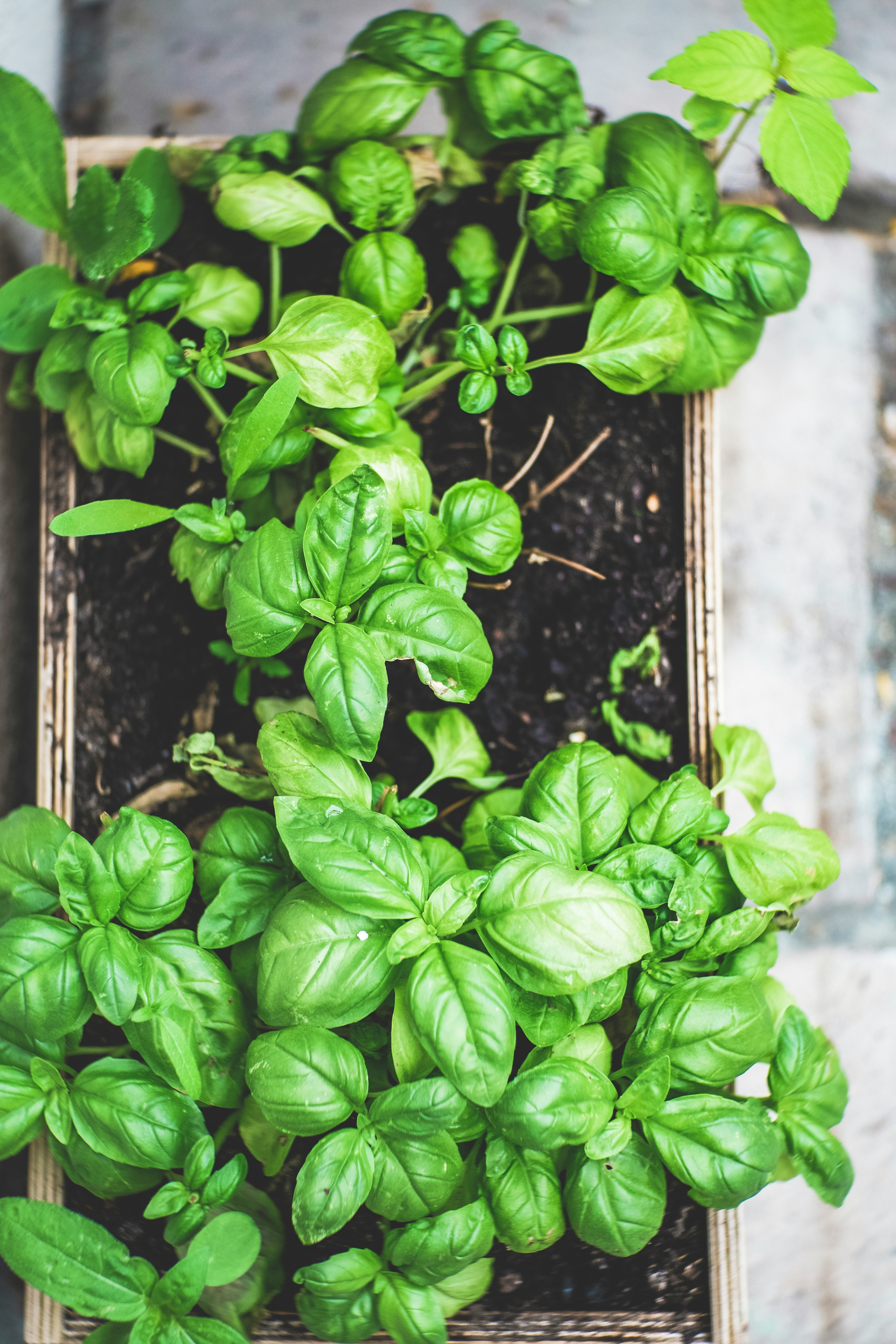

Instead of growing things that are pretty cheap at the grocery store like beans or potatoes, grow the expensive items.
For example, fresh basil is a super easy herb to grow at home but one of the most expensive herbs at the store!
Start an herb garden from seed to have the freshest ingredients right at your fingertips and never spend another dime for fresh taste again!
9. Propagate plant cuttings


Instead of buying an entirely new plant, start your own through easy propagation.
You can do this from organic foods already in your fridge or find local buy-nothing groups or Facebook marketplace for garden exchanging of cuttings.
Become good enough with the practice and you’ll never have to buy seeds again!
10. Upcycle everything as a planter
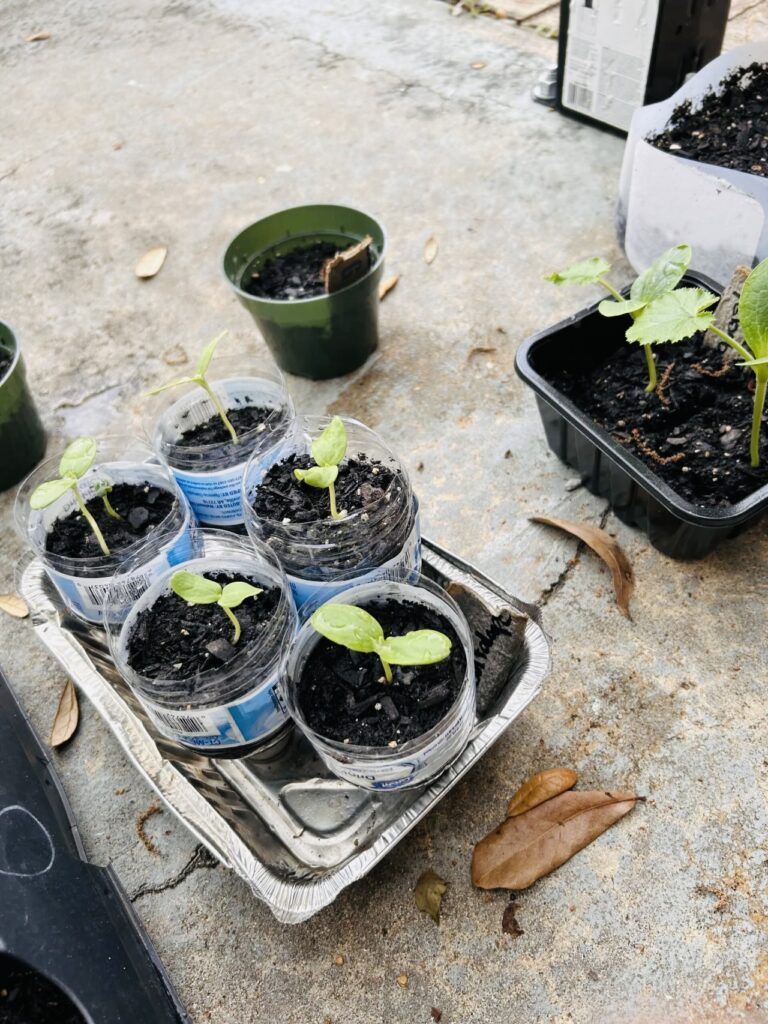

Instead of buying a brand new expensive pot or planter from the store, consider upcycling items around your home.
Plastic soda bottles, yogurt containers, and old utility buckets can all be upcycled into a planter for growing.
My favorite repurposed item is a large storage bin. It holds plenty of soil, it’s deep enough for most edible plants, and you can plant companions like herbs!
11. Visit your local library
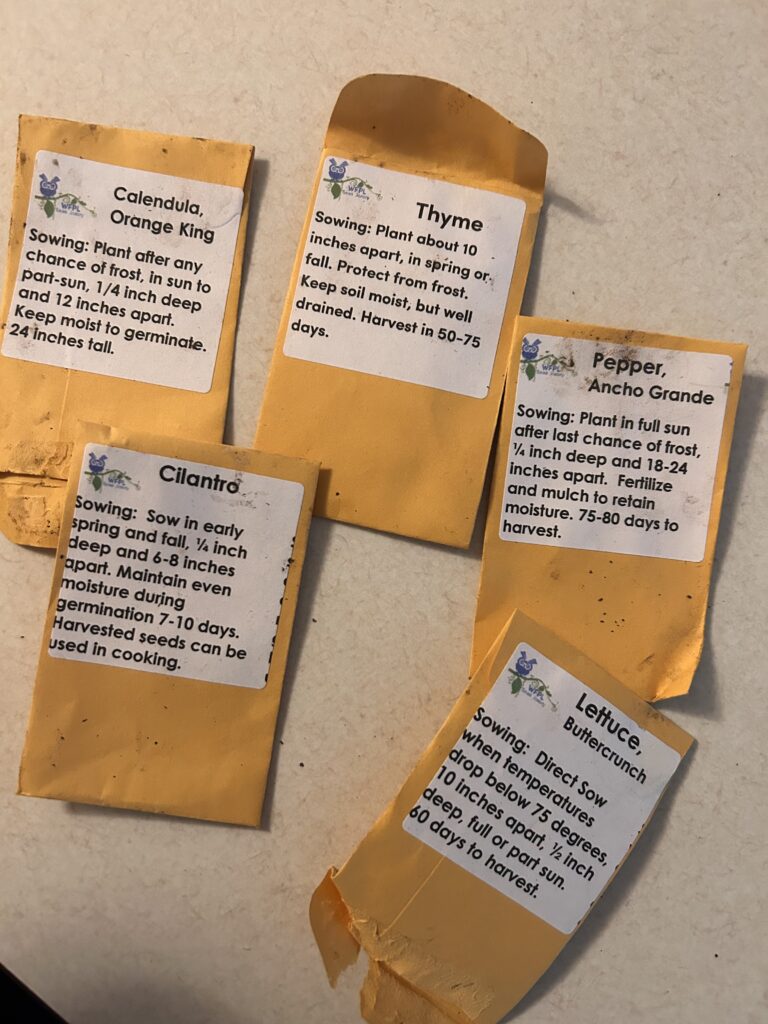

Did you know some libraries participate in a seed exchange program, where you can pick up seeds for free?
Did you know people who are eligible for the Supplemental Nutrition Assistance Program (SNAP) can purchase any plant that produces edible foods?
This includes vegetable plants and fruit trees and all you need is your card.
Start researching local government programs in your community to find out what you qualify for or what is already free to the public!
12. Buy seeds from the grocery store
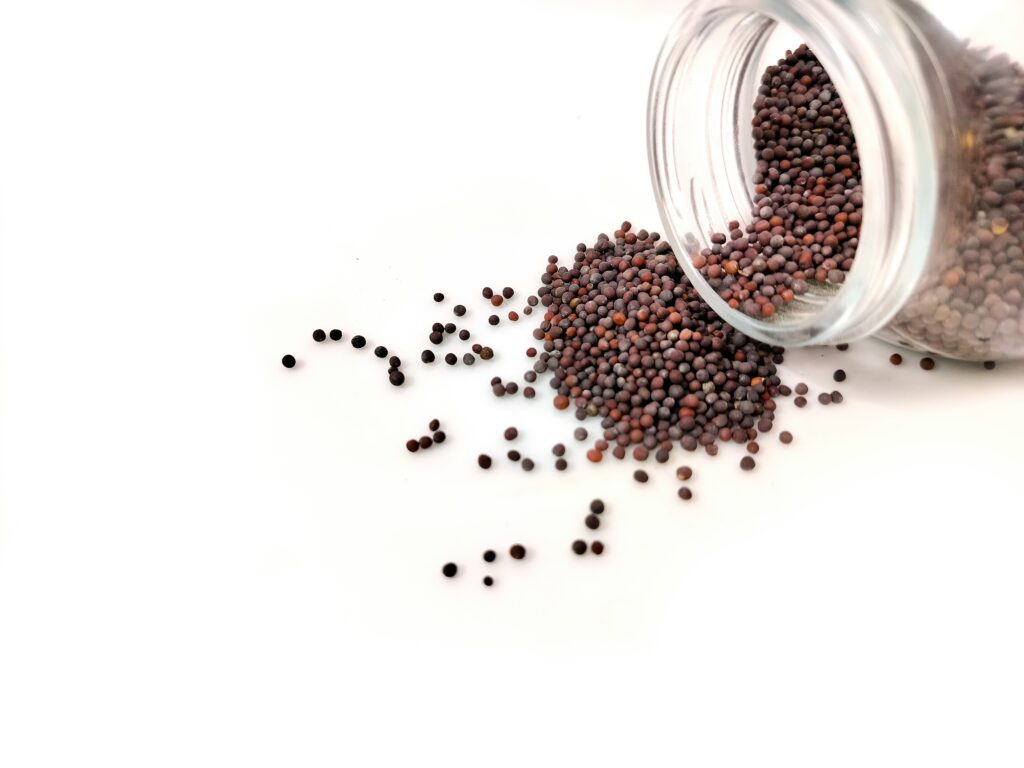

Beat retail psychology and get more value for your dollar by buying unroasted whole spice seeds from the grocery store!
Experiment with coriander, sesame, flax, and mustard for options.
You also get a quite larger supply than buying from a traditional garden retailer.
13. Grow flowers from seed
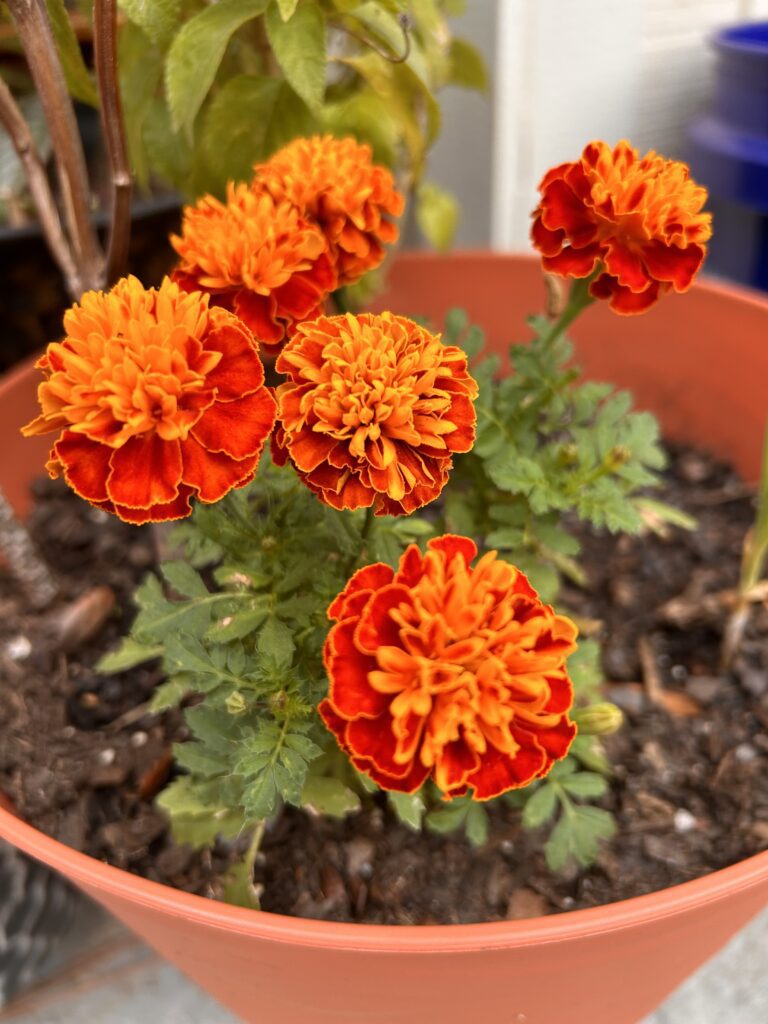

Just because you’re being frugal does not mean you cannot bring beauty into your space!
Flowers are not only aesthetically beautiful, but they create a healthy and balanced ecosystem by attracting pollinators.
Save on classics like marigolds and zinnias that are easy to care for, long-lasting, and produce plenty of seeds for next season.
14. Visit your local Dollar Tree


We’ve all felt the impact of inflation lately and while Dollar Tree is no exception, this is one of the best garden resources out there.
Every season, Dollar Tree is a one-stop shop for pots, seeds, soil, and every garden accessory you need to get started.
If you’re on a budget but want to start a container garden in a small space, this is one of the best shopping hacks to remember!
15. Start companion planting
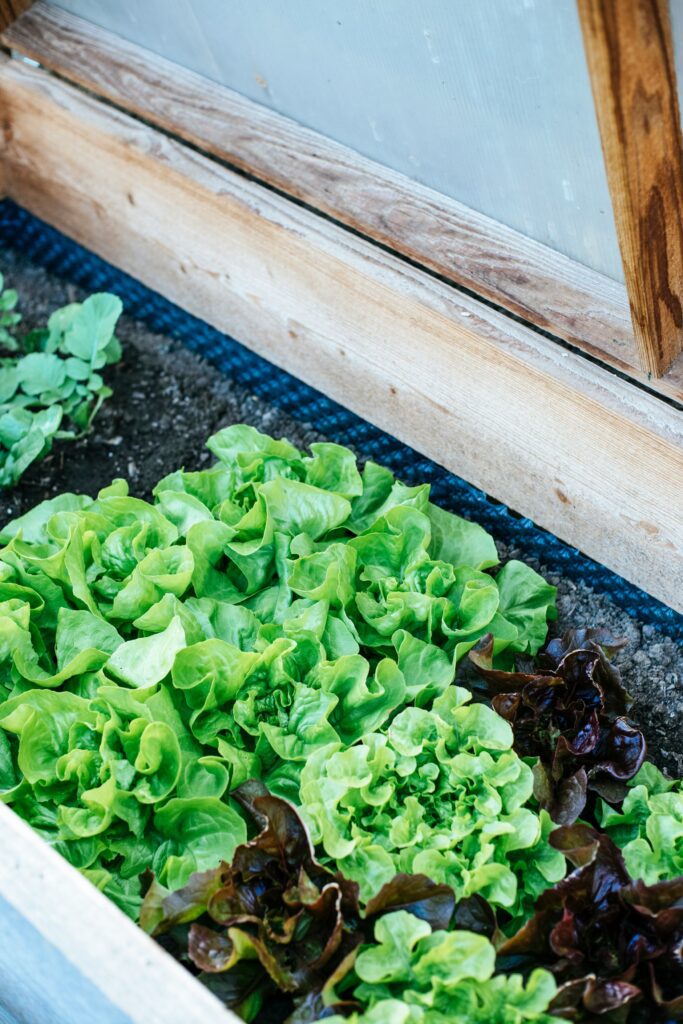

To cut down on pests eating your hard work, consider companion planting to create a balanced ecosystem.
For example, kale or lettuce under tomato plants. Potatoes under pole beans.
You can use the area more efficiently that way, and it makes watering and weeding easier.
16. Be a scavenger for discounts
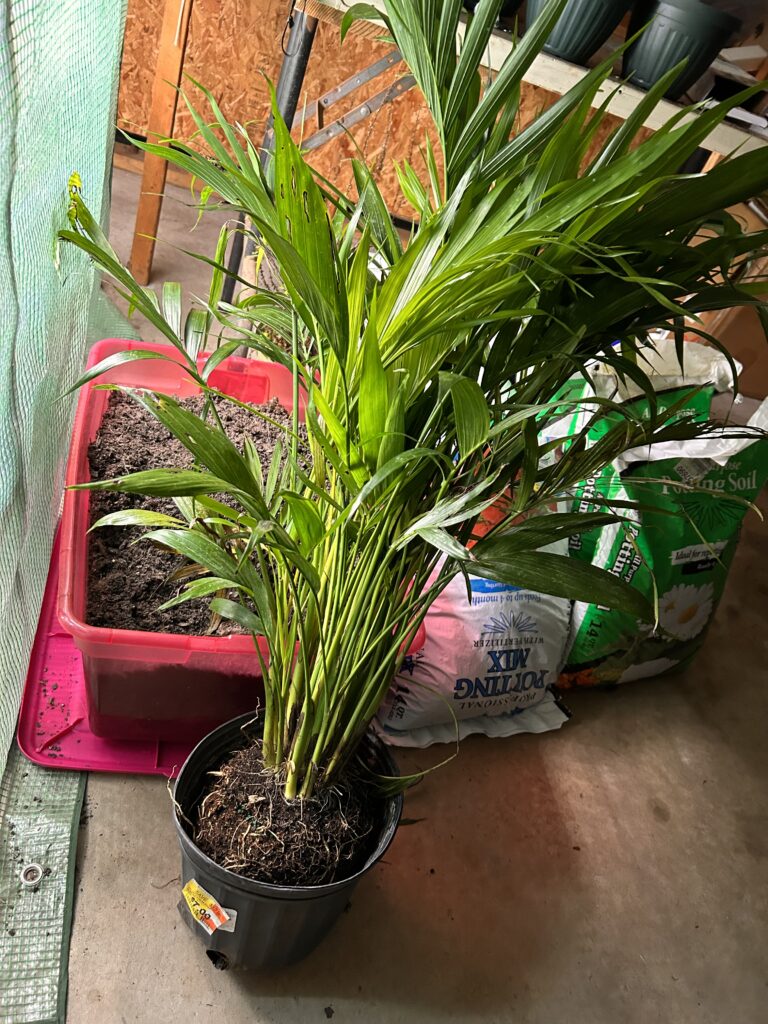

If you go to big box retailers during the growing season, try to look for bags or plants that look damaged in transit or on display.
I snagged this Majesty Palm for $7 from Wal-Mart!
Stores like Lowe’s and Home Depot will sell these damaged bags of potting soil at a heavy discount due to the risk of biohazards, as it is a liability to the store.
If you’re ok with the risk while cashing on their mistakes, be sure to grab them while you can!
17. Regrow kitchen scraps
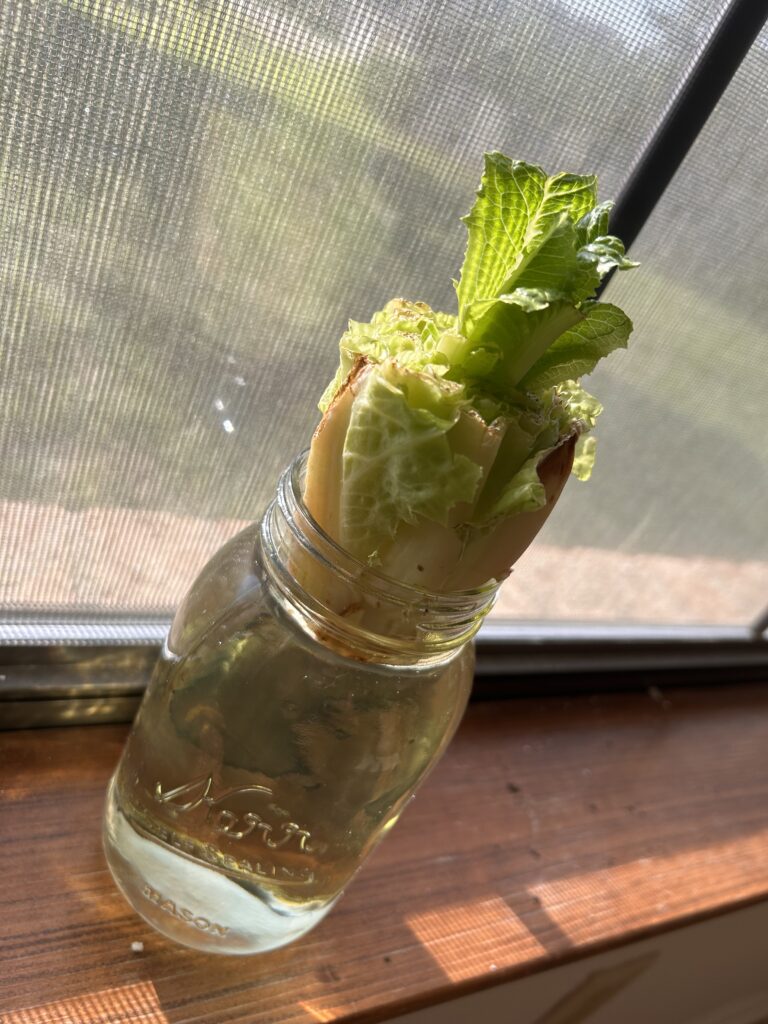

Carrot tops, green onion roots, and lettuce roots put into organic soil will sprout new growth.
Don’t harvest the entire plant. Continue to pick from the outer leaves.
One of the most useful container gardening hacks that encourages the plant to keep producing and you’ll have regrowth all season!
18. Buy a drill


Sometimes spending the money to invest in a product like this cordless power drill is a smart move.
When it comes to container gardening, a drill allows you to create drainage holes easily.
Save money by transforming anything and everything into a planter including storage containers or even kiddie pools.
As someone who is not very handy, a power drill is definitely an empowering tool to have!
19. Use nature for mulch
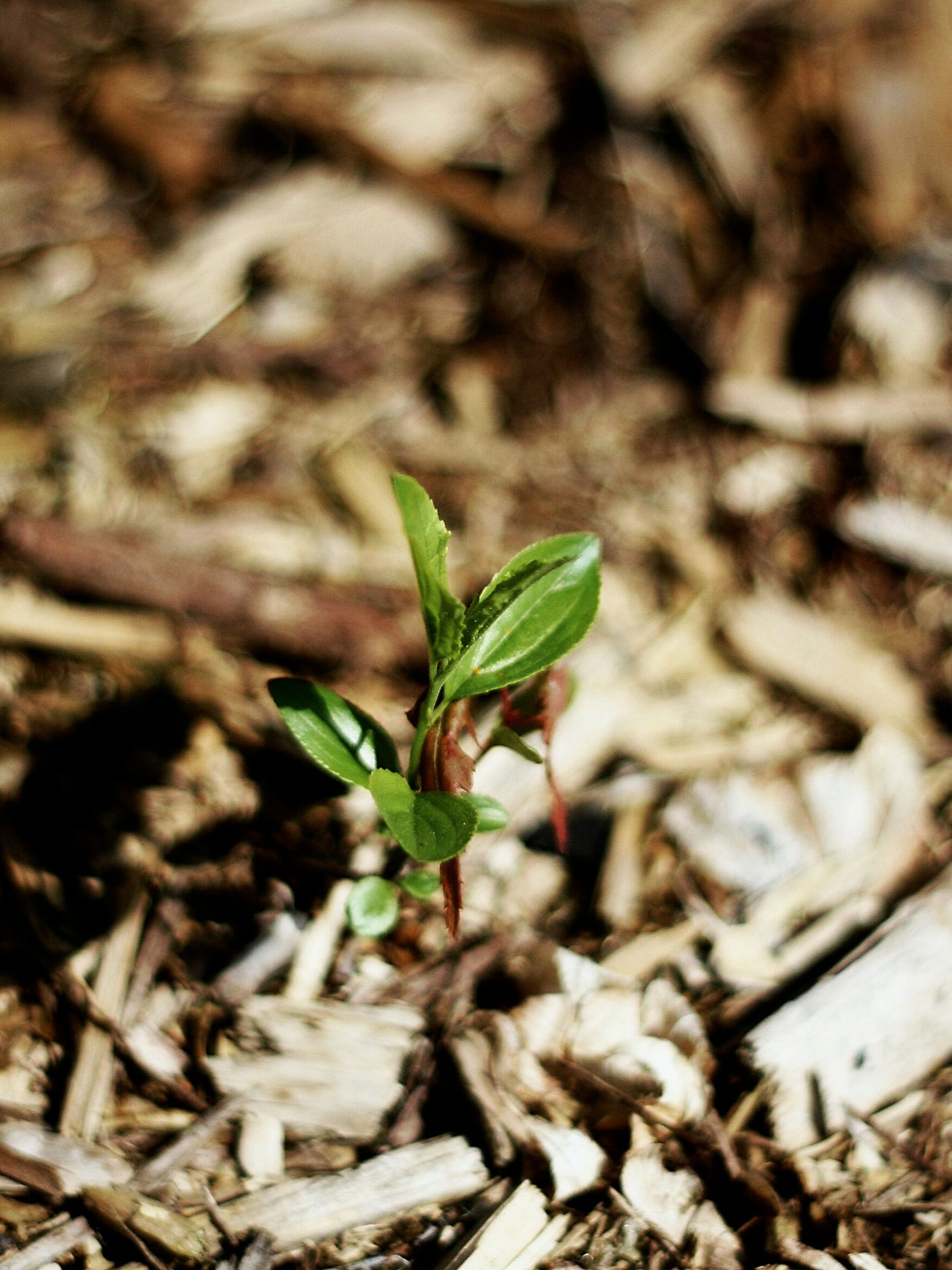

If you live in a climate with hotter temperatures throughout the year, mulching your container garden plants is a must!
Mulching the top layer of plants effectively keeps you plants cool for longer and cuts down on watering for you.
No need to run to the store though, just look around you for the free resources available.
Homemade compost is my favorite form of mulch but leaves or wood chips also make great choices!
20. Plant in the bag of potting mix
Turn your fresh bag of potting mix into a DIY planter right on your balcony or porch.
Sometimes we want to start a garden and you just have to use what you got. Or you may be on a budget! Truth is, it doesn’t matter.
Planting in the bag saves money and you can easily use each bag to companion plant with vegetables, grow herbs, or start flowers to attract pollinators.
21. Save your seeds
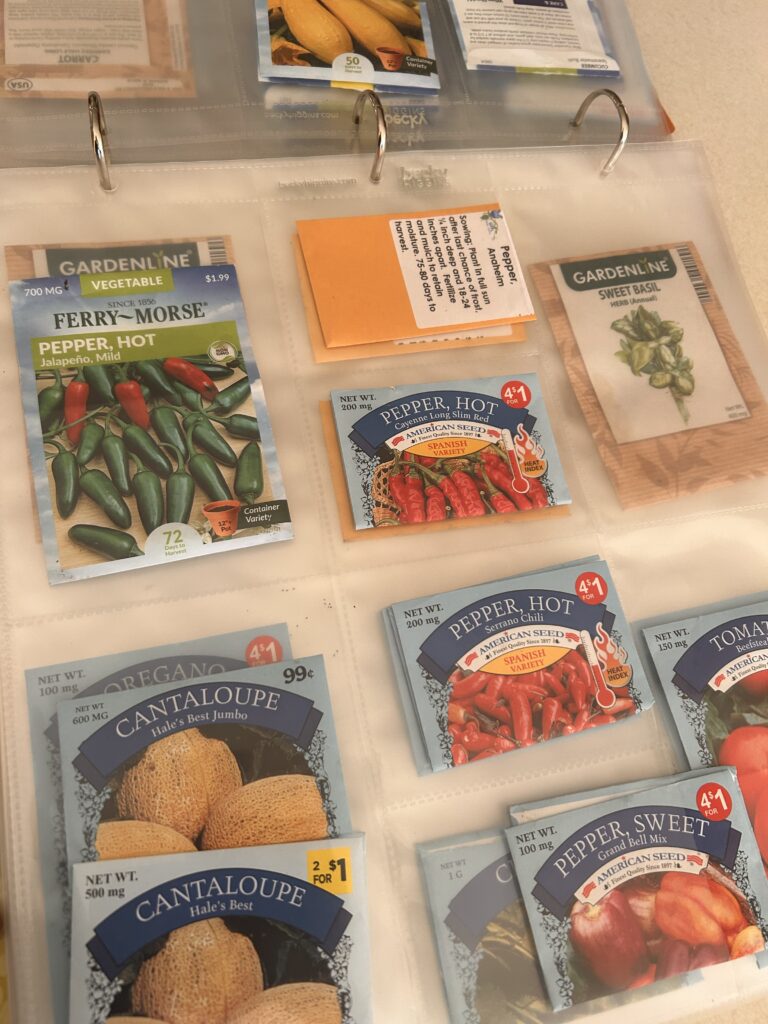

A seed album is perfect for those who love to stay organized and track seasons, garden months, plant needs etc.
Old photo albums are a perfect way to do this. Stash your collected seeds and start saving them as your plants bloom.
Keep in a cool and dry place to ensure your seeds remain long-lasting!
22. Use filler for large pots


Large pots are preferred but when it comes to a balcony, pots can quickly become heavy with soil and even heavier after watering.
The secret is to use plant filler! Not glass or plastic bottles but more natural things like leaves, branches, and sticks.
Not only will this balance out weight but the wood will retain moisture in your soil for longer!
23. Preserve your harvest
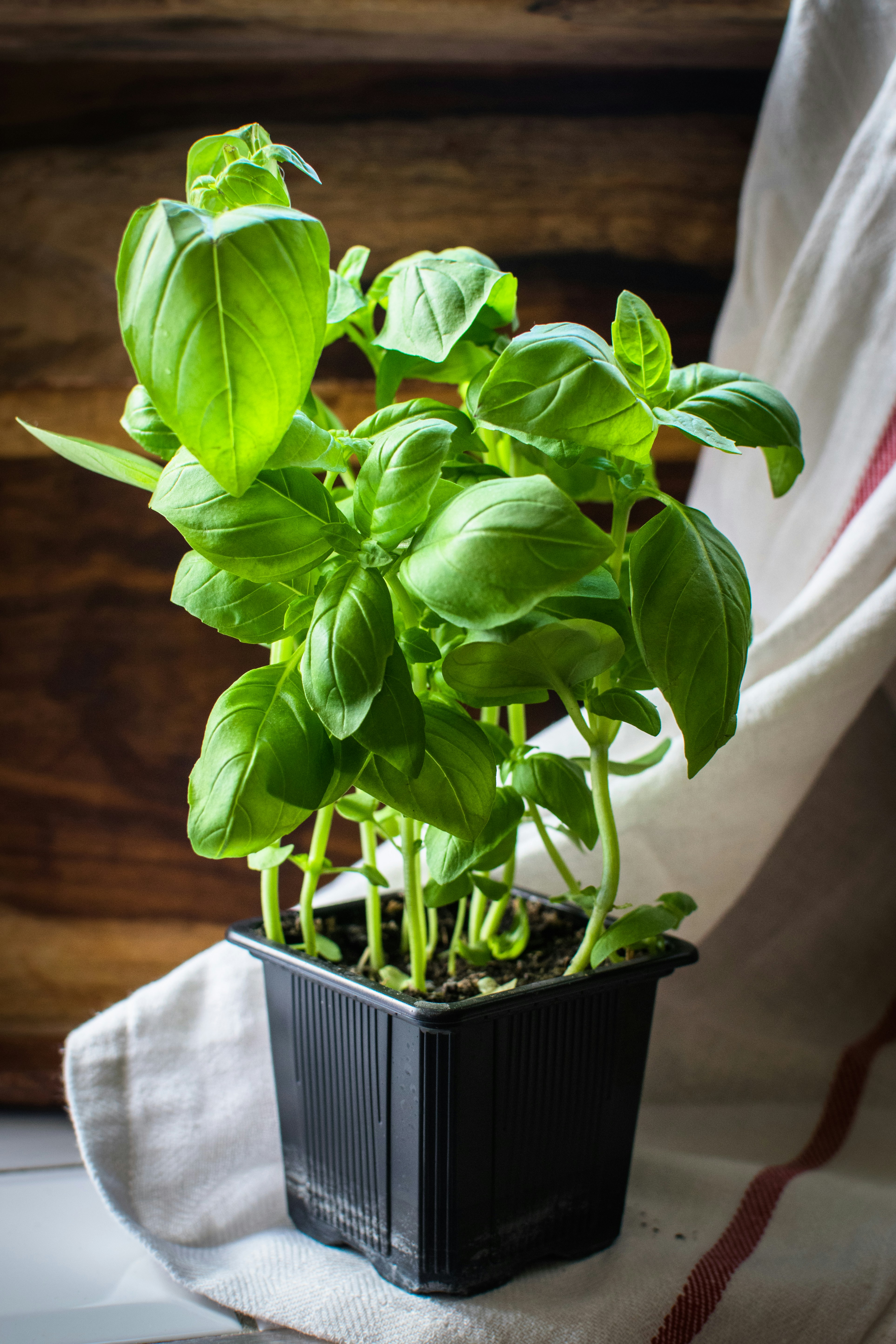

If you’re a pro in the kitchen, take your new harvests from your container garden and learn to preserve them.
For example, if you’re growing herbs like basil, pluck the leaves and freeze them.
Once you’re ready to use for cooking, simply break off a frozen piece and throw it into the pot.
Found this post helpful? Pin and share!



